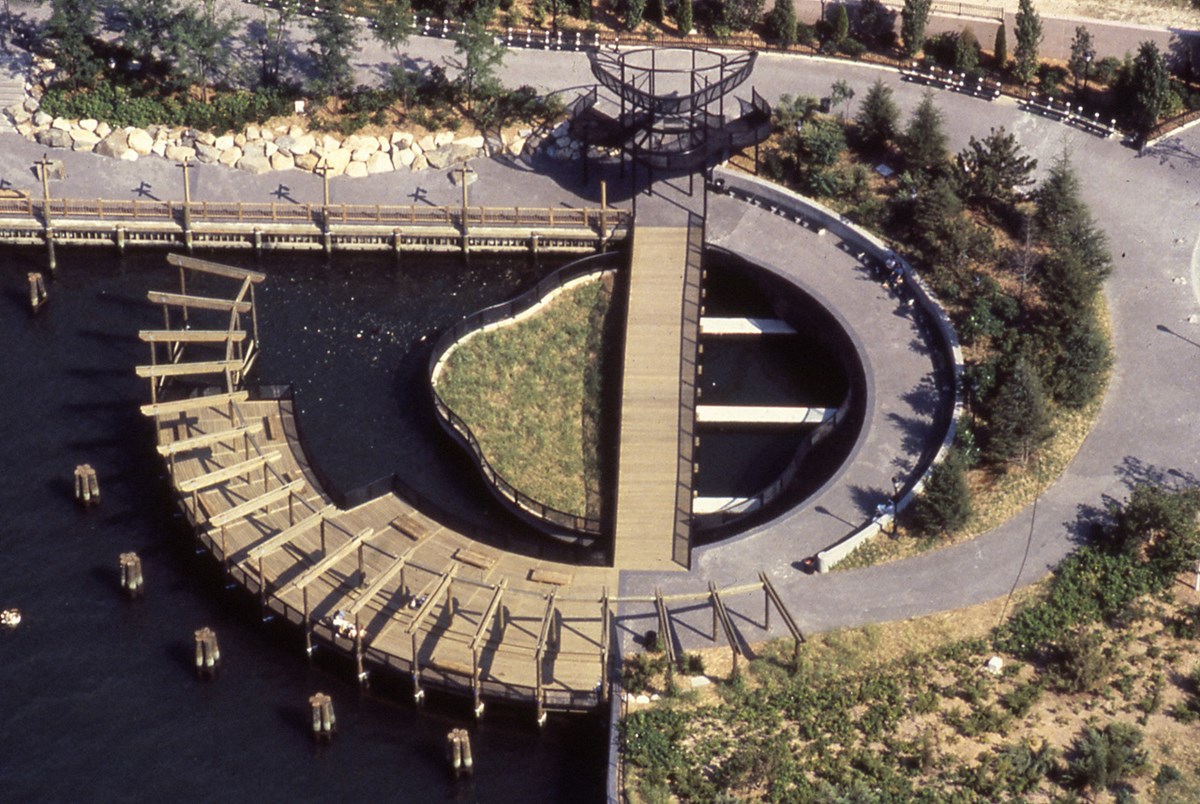
09/09/2024
Art in America
By Kirsten Swenson
Mary Miss’s Greenwood Pond: Double Site (1989–1996), commissioned in the late ’80s by the Des Moines Art Center in Iowa, merges sculpture, study space, and landscape design within a wetland ecosystem. Arced boardwalks lead visitors over the surface of a pond, descending to meet the water—one leads to a sunken seating area for a close encounter with lily pads, frogs, and dragonflies. Pilings frame a section of the shoreline as a sculptural space. On land, an earthen mound echoes the curve of the shoreline and an open pavilion offers shelter.
“I really wanted people in Iowa, where repeated floods have been so damaging over the years, to see a wetland up close and to begin to understand how it functions,” Miss said recently in reference to a work she describes as “a demonstration wetland.” Created during a yearslong collaboration between Miss, the Art Center, scientists, and community groups, Greenwood Pond marked a turning point in Miss’s career when she realized that collaboration of the kind made it more possible to approach complex problems like climate change and humans’ relationship to the environment.
But the Des Moines Art Center has not maintained the work’s wooden structures, including the boardwalks and pavilion, and in October the site was closed to the public over safety concerns. Citing repair costs of $2.6 million, the museum’s board voted in March to demolish Greenwood Pond: Double Site, and director Kelly Baum signed a demolition order. In early April, Miss sued the Art Center, and in May, a federal judge issued a preliminary injunction concluding that “neither side is entitled to what it wants.” The Art Center cannot demolish Greenwood Pond, but neither can Miss “force the Art Center to repair or restore the artwork to its original condition.” The result, the judge conceded, is “an unsatisfying status quo” in which the work will remain standing but in disrepair.
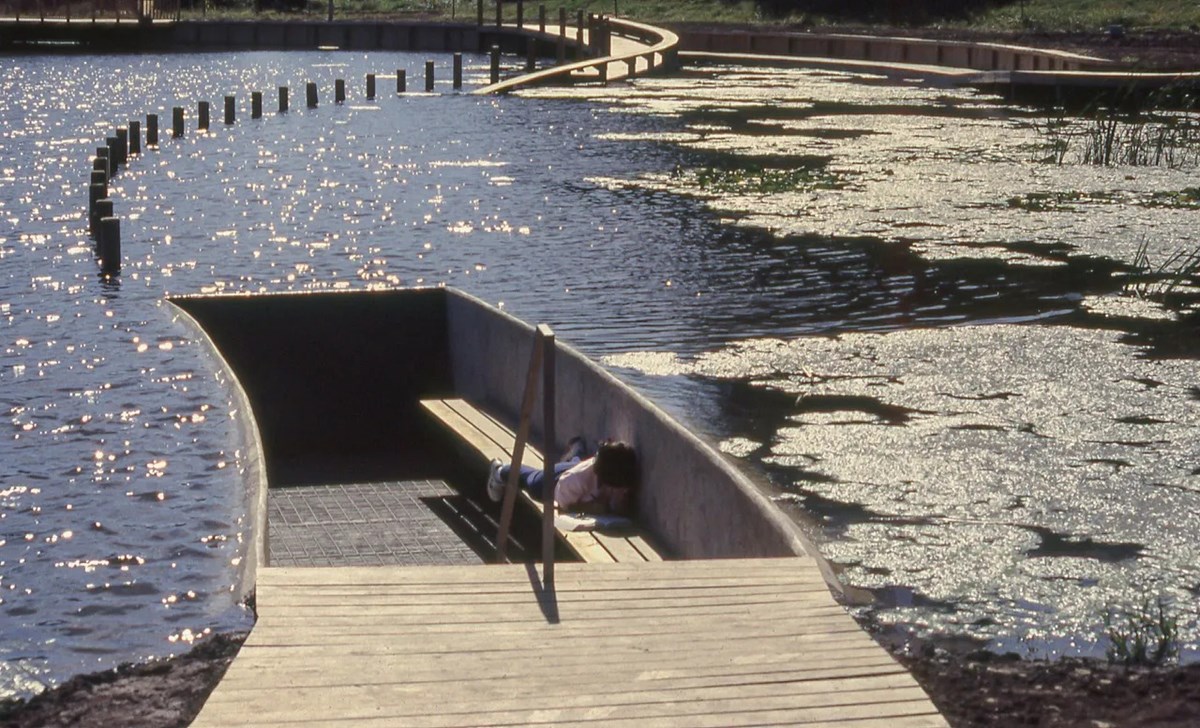
Complication carries over in other ways in ambitious projects that often take years to pull off and require enormous investment and risk, particularly public projects involving many stakeholders. “Public art is treacherous,” Ukeles told me, adding that she was echoing words she recalled Miss saying to her once. Funding fluctuates, problems arise, priorities shift. Some sites are finished, while others will never be complete. More than a few have been in progress in one way or another for decades. Even celebrated projects that have been fully realized can’t be taken for granted.
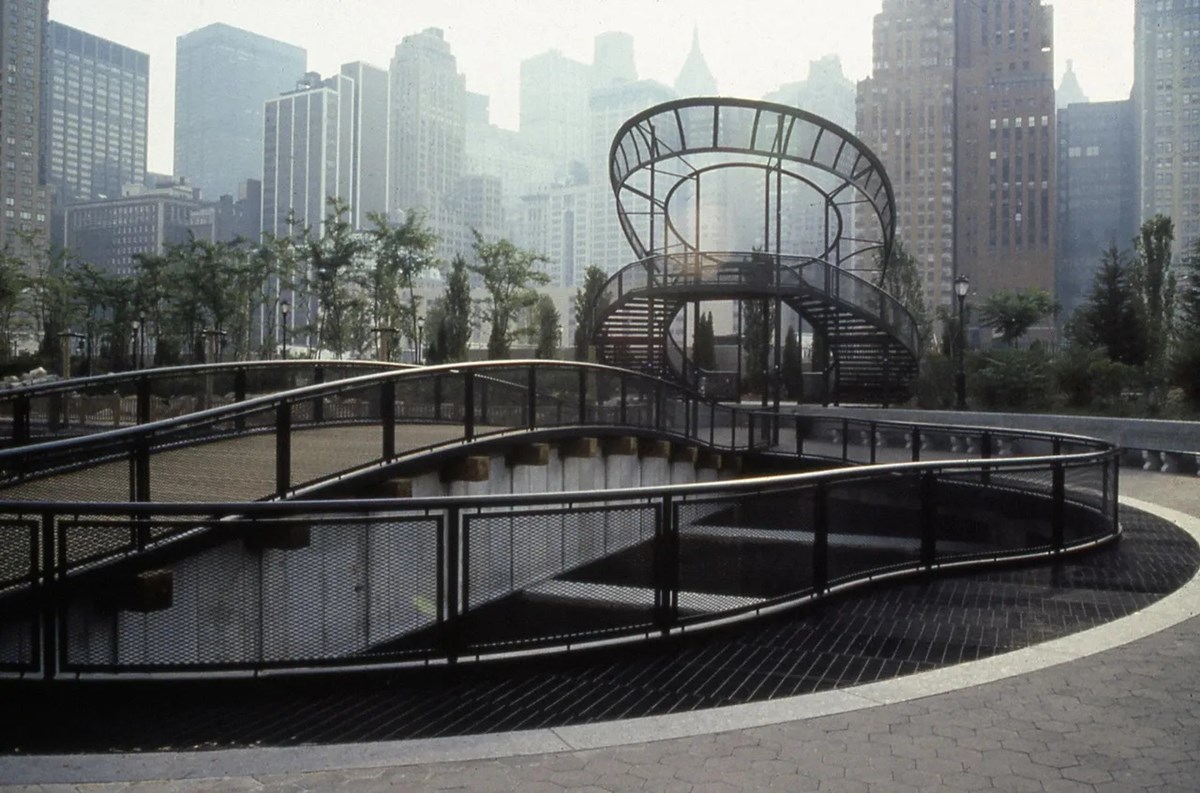
Visitors to South Cove walk along a boardwalk—a seam of craggy rocks and meadow grasses on one side, the river and a grid of pilings on the other. The pilings reference the remains of piers that can still be seen on Manhattan’s West Side, a remnant of the island’s industrial history. Miss placed pilings at South Cove by design, “stitching together the land and the water.” Gulls and cormorants were fishing from the pilings on a visit in May—it’s easy to forget that Manhattan is part of a saltwater ecosystem, but not at South Cove. A curved jetty leads visitors over the water. As Miss explained, “South Cove was very much about trying to bring people into contact with water and their experience of being there and being able to interact with the water–hearing it, or smelling it, or getting their feet wet.” At high tide, water splashes onto the jetty. An elevated structure offers another perspective, situating the site in New York Harbor with views of the Statue of Liberty, New Jersey, and Staten Island.
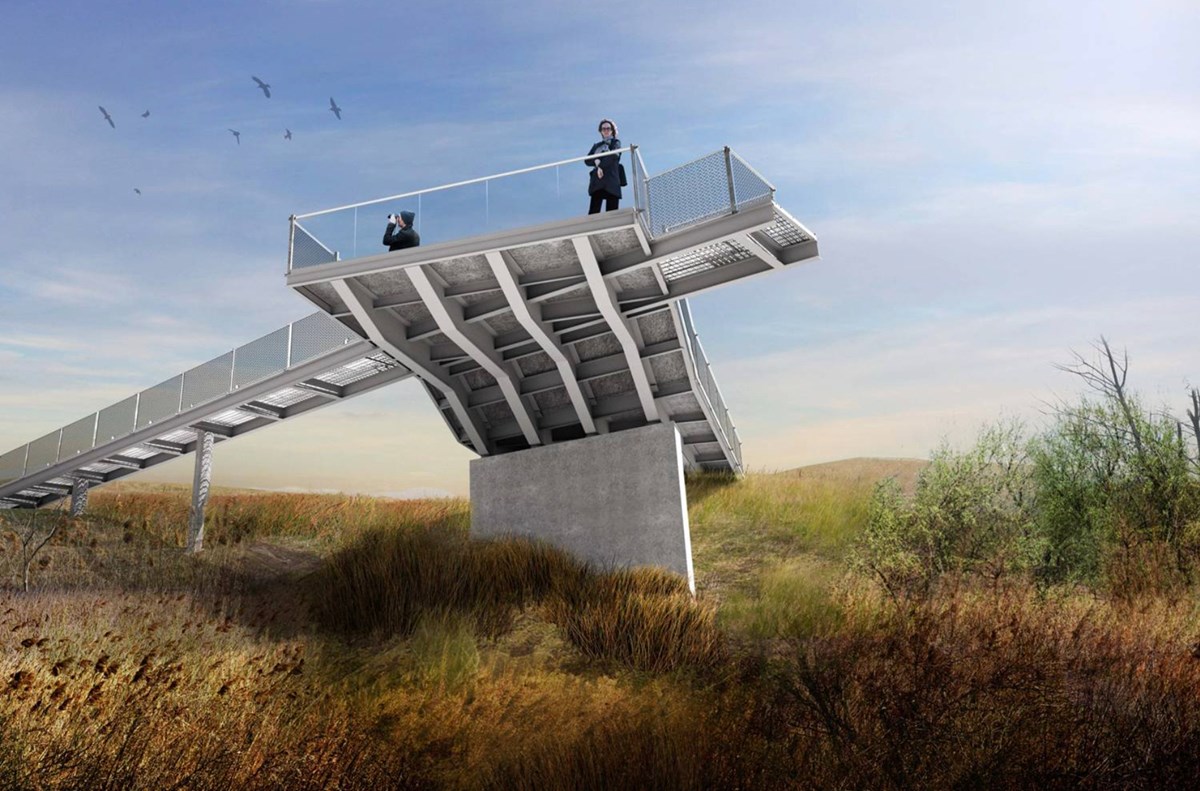
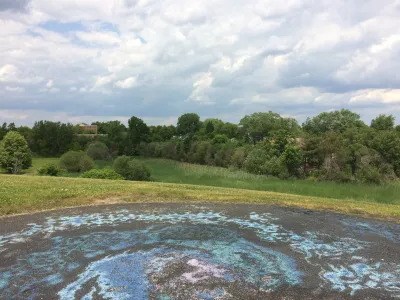 Image by Kirsten Swenson
Image by Kirsten Swenson
Turnaround/Surround occupies the site of a Cambridge landfill that was active from the 1950s to the 1970s. As you walk through Danehy Park, there are meadows and playing fields but no signs that you’re entering an artwork. This is as Ukeles intended—Turnaround/Surround is meant to be continuous with the larger environment. But the topography of a flat-topped landfill mound is hard to miss. “Glassphalt” pathways designed by Ukeles meander along the sides of the mound to the top. The asphalt sparkles with colorful crushed recycled glass. The paths are bordered by fragrant flowers that Ukeles calls “smellers.” These were inspired by a woman who grew up in the subsidized housing towers that border one side of the park. “My whole childhood stank!” the woman told Ukeles, in reference to growing up next to an active landfill. The paths now smell of lavender and roses in summer.
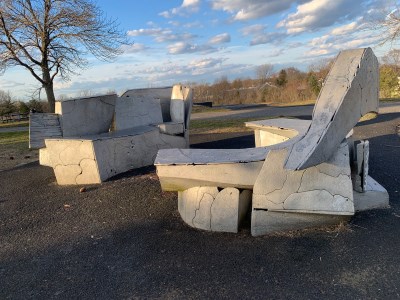 Image by Kirsten Swenson
Image by Kirsten Swenson
Nancy Holt’s landfill earthwork Sky Mound (1984–) was commissioned by the Hackensack Meadowlands Development Commission, an agency formed to manage the numerous landfills sited in eastern New Jersey’s wetlands. For Holt, the 57-acre site of the largest landfill was a transcendent locale: “When you walk to the top of the landfill, you can see all of Manhattan. You can see the sky. You can see, maybe 20 miles in every direction. And you are totally conscious of the sky, the same way as you would be out west,” Holt told an interviewer in 1993.
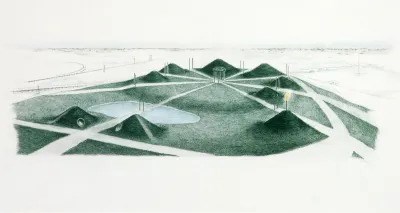 Image by ©Holt/Smithson Foundation/Licensed by Artists Rights Society, New York
Image by ©Holt/Smithson Foundation/Licensed by Artists Rights Society, New York
Holt’s commission for Sky Mound was preceded by her successful completion of Dark Star Park (1979-1984) in Arlington, Virginia—another project that invites awareness of the cosmos. In 1979, Holt accepted a commission to design a park near the newly opened Rosslyn Station–the first Metro stop across the Potomac River from Washington, D.C. As a letter from the National Endowment for the Arts noted, this was a unique commission “which permits the artist to design the entire environment for the work of art.” Holt had completed her iconic Sun Tunnels in the Utah desert three years earlier. With Dark Star Park she was continuing “concerns with the architectural form of the tunnel and its various symbolic ramifications–birth, death, transitions, etc.”
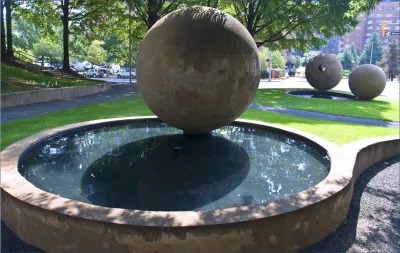 Image by Kirsten Swenson/©Holt/Smithson Foundation/Licensed by Artists Rights Society, New York, 2024
Image by Kirsten Swenson/©Holt/Smithson Foundation/Licensed by Artists Rights Society, New York, 2024
Miss, Ukeles, and Holt are just a few among other artists of their generation—see also Patricia Johanson, Elyn Zimmerman, Betty Buchanan, and Alice Aycock—whose earthworks, structures, and environments engage the American landscape. Though their projects are urban and accessible, these women remain less visible than Land artists like Robert Smithson or Michael Heizer who worked in remote desert locales. Their work is groundbreaking and, for many, just a subway ride away. It deserves a place on the itinerary—and in art history.
